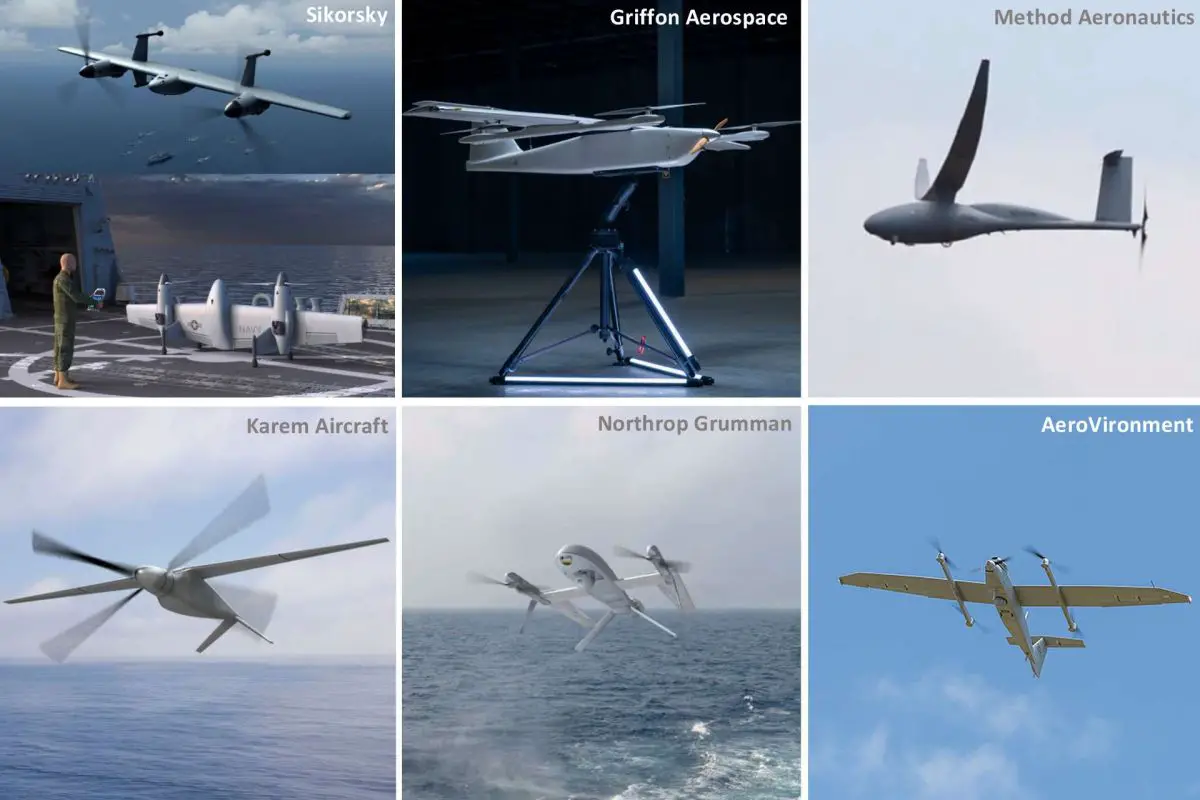 |
| The selected designs will come from both small startups and established aerospace companies. (Picture source: AeroVironment, Griffon Aerospace, Karem Aircraft, Vanilla Unmanned, Northrop Grumman, and Sikorsky) |
Ancillary X-Plane Program: Enabling UAS Operations in Austere Environments
The Darpa's Ancillary X-Plane Program aims to develop and flight demonstrate cutting-edge technologies for vertical takeoff and landing, low-weight, high-payload, and long-endurance unmanned air systems (UAS). The program focuses on advancing propulsion architectures, onboard energy storage, and manufacturing technologies to enable sustainable operations from ship decks and small land locations, even in harsh weather conditions. The goal is to reduce reliance on infrastructure equipment, minimizing personnel costs, and vulnerabilities during sensitive operations.
US Department of Defense selects six companies for next-gen VTOL drones
Summary
The ANCILLARY program aims to improve the capabilities of small VTOL UAS by a factor of three compared to current technology, focusing on increasing payload weight, range, and endurance while eliminating the need for extensive infrastructure. The primary goal is to enable small UAS to operate from naval vessels and remote land locations without large mechanical launchers and landing/recovery equipment.
Each selected company brings unique expertise and experience to the project:
1. AeroVironment has developed several VTOL technologies, including the SkyTote and Nano Hummingbird.
2. Griffon Aerospace has experience with VTOL systems through the development of the Valiant and RedWing UAS.
3. Karem Aircraft specializes in high-efficiency tiltrotors and has contributed to various VTOL projects.
4. Method Aeronautics, with team members previously involved with Vanilla Aircraft, has experience in developing long-endurance UAVs.
5. Northrop Grumman has developed and deployed autonomous VTOL systems, such as the MQ-8 Fire Scout.
6. Sikorsky, known for its helicopter innovations, is testing a new VTOL/UAS with a "rotor blown wing" design.
The selected companies will refine their designs, conduct testing, and submit proposals for the next phase of the program, which includes detailed design, fabrication, and flight testing.
On May 22, 2024, the Defense Advanced Research Projects Agency
(DARPA), a research and development agency under the US Department of
Defense, announced the selection of six designs for the next phase of
its AdvaNced airCraft Infrastructure-Less Launch And RecoverY
(ANCILLARY) program, which aims to develop a Class 3 UAS VTOL X-Plane.
The selected designs come from both small startups and established
aerospace companies: AeroVironment, Griffon Aerospace, Karem Aircraft,
Method Aeronautics, Northrop Grumman, and Sikorsky.
Steve Komadina, DARPA's program manager for ANCILLARY, outlined the project's objectives, which include enabling small UAS to operate from naval vessels without large mechanical launchers and landing/recovery equipment. This capability is intended to support operations in various environments, including ship decks and remote land locations, even under adverse weather conditions.
The program aims to allow a network of small UAS to be launched from ships, providing beyond-line-of-sight capabilities such as finding, fixing, tracking, and targeting (F2T2) surface vessels of interest. While the primary focus is on supporting Navy and Marine missions, other military branches, including the Army, Air Force, Special Operations Command, and Coast Guard, have shown interest in the potential applications of this technology for logistics, strike operations, and other special uses.
In Phase Ia, the ANCILLARY team explored conceptual designs from a diverse group of companies, which also included Leidos, AVX Aircraft, and Piasecki Aircraft. In Phase 1b of the ANCILLARY program, the six selected companies will continue with risk reduction, detailed analysis, and testing for an X-plane demonstrator over a ten-month period. This phase involves refining design processes and conducting component and configuration hover tests. At the end of this phase, teams will submit competitive proposals for Phase II, which will include detailed design, fabrication, and flight testing.
AeroVironment
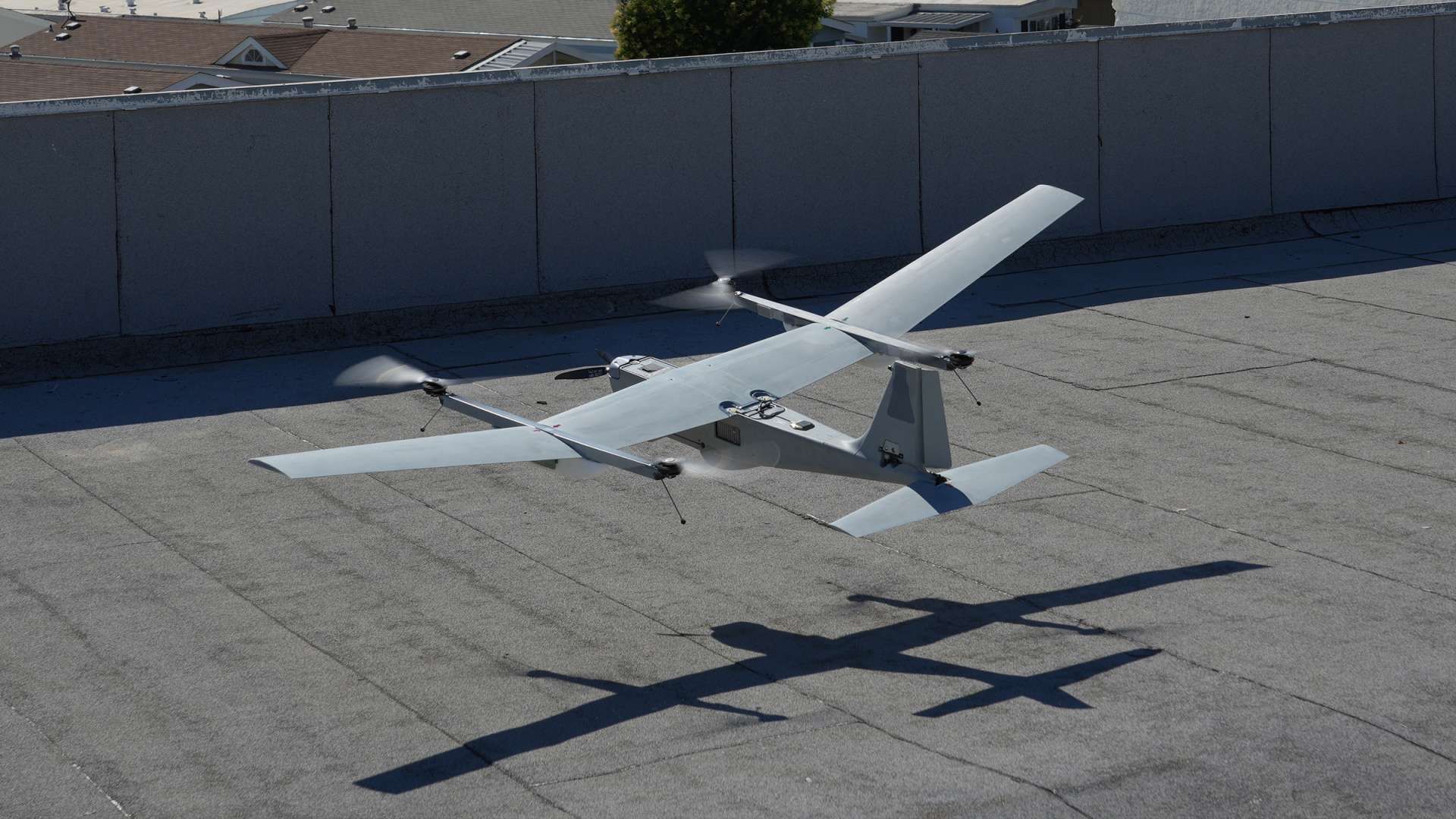
AeroVironment's product line includes small VTOL UAS like the Puma, and the Switchblade loitering munition system. (Picture source: AeroVironment)
AeroVironment's product line includes small UAS like the Raven, Puma, and Wasp, along with the Switchblade loitering munition system. AeroVironment also enhances the operational capabilities of its existing UAS platforms. This includes the development of auxiliary systems that integrate with primary UAV platforms to provide functionalities like improved surveillance, communication links, and payload options. The goal is to create more adaptable systems to meet various mission requirements, reflecting the company's strategy to expand its product offerings in response to emerging market needs.
AeroVironment has developed several VTOL technologies, including the SkyTote, a hybrid UAV combining VTOL capabilities with fixed-wing efficiency for flexible takeoff and landing, and the Nano Hummingbird, a small VTOL drone designed for surveillance. These projects demonstrate the company's experience in creating vertical take-off and landing (VTOL) uncrewed aerial systems (UAS) for complex operational scenarios, one of the major requirements for the DARPA project.
Griffon Aerospace
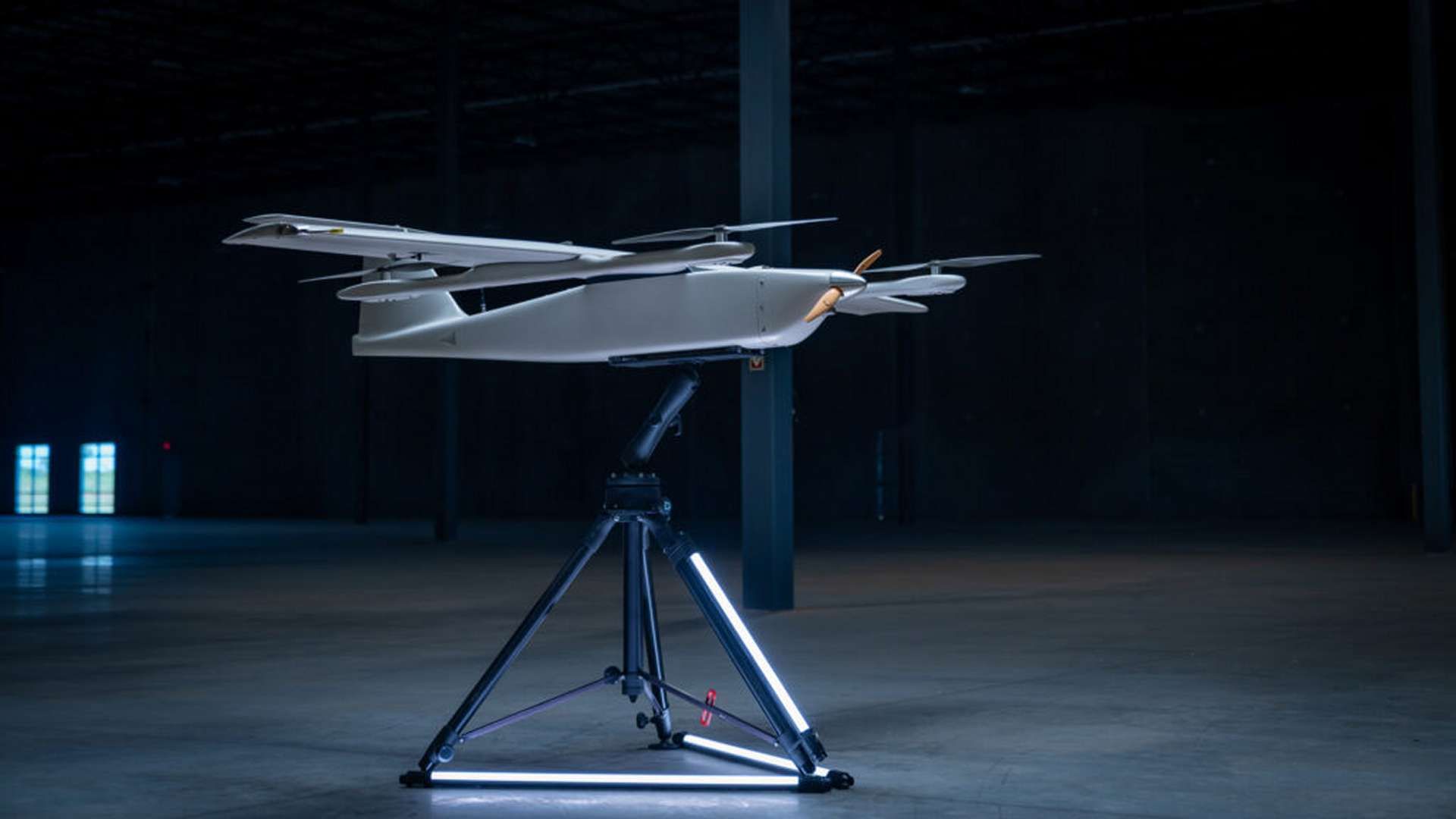
Equipped with four motors for vertical takeoff and landing (VTOL) and an additional motor for forward flight, the RedWing can accommodate payloads of up to 5.5 kg. (Picture source: Griffon Aerospace)
Griffon Aerospace, founded in 1995 by Larry French, is based in Madison, Alabama, and specializes in the manufacture of unmanned aircraft systems (UAS), including UAVs and aerial targets. The company also produces ground support equipment. Griffon Aerospace has delivered over 6,000 unmanned air vehicles, maintaining a production rate exceeding 100 aircraft per month. The company's offerings extend to aircraft design and analysis, avionics and payload integration, and comprehensive testing services.
Griffon Aerospace has significant experience with vertical takeoff and landing (VTOL) systems, notably through the development of the Valiant and RedWing UAS, designed for expeditionary operations. The Valiant features VTOL capabilities suitable for various environments. Additionally, Griffon has participated in the U.S. Army's Future Tactical Unmanned Aircraft System (FTUAS) program, with their designs selected for important development phases.
Karem Aircraft
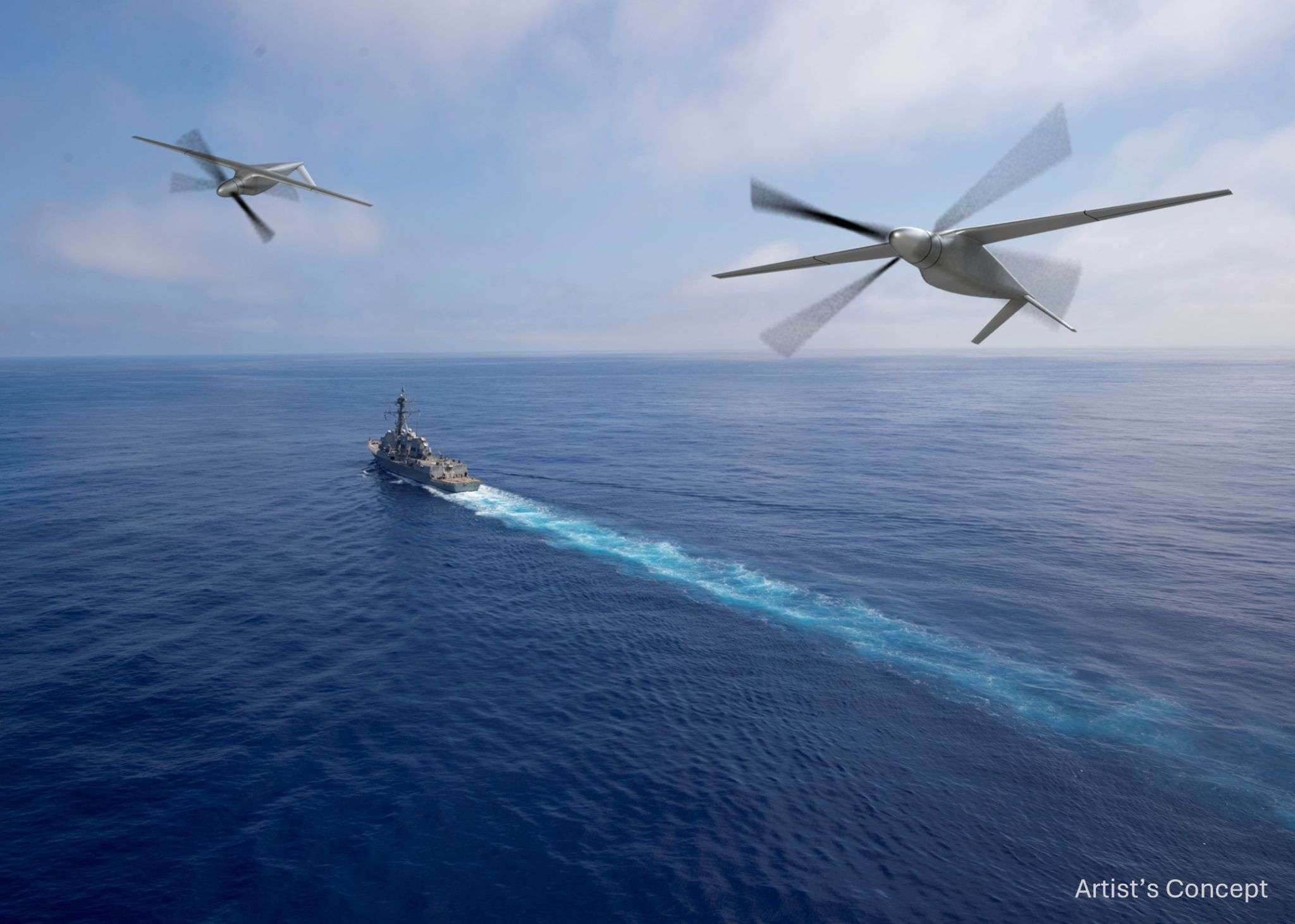
The Karem Bluebird, submitted for this DARPA initiative, is a contrarotating, coaxial Optimum Speed Tilt Rotor (OSTR) aircraft featuring a high wing, inverted V-tail, and a carbon composite airframe housing a 40 hp heavy-fuel propulsion system. (Picture source: Karem Aircraft)
Karem Aircraft, established in 2004, develops advanced fixed-wing and rotary-wing aircraft, specializing in high-efficiency tiltrotors. Karem Aircraft's Optimum Speed Tiltrotor (OSTR) technology combines the efficiency of fixed-wing airplanes with the hover capabilities of helicopters. Karem Aircraft has participated in various VTOL (Vertical Take-Off and Landing) projects. Notable past projects include the development of the A160 Hummingbird, an unmanned aerial vehicle now owned by Boeing. Additionally, Karem Aircraft has contributed to the U.S. Army’s Joint Multi-Role Technology Demonstration (JMR TD) program, supporting the Future Vertical Lift (FVL) initiative.
Optimized for loiter endurance at extended ranges, the Bluebird could meet the DARPA's ANCILLARY program objectives. The Karem Bluebird is a contrarotating, coaxial Optimum Speed Tilt Rotor (OSTR) aircraft featuring a high wing, inverted V-tail, and a carbon composite airframe housing a 40 hp heavy-fuel propulsion system. It achieves the maneuverability required for shipboard operation through the rigid rotors’ control capacity. The Bluebird incorporates Near Earth Autonomy’s system for operator-free takeoff and landing from Naval shipping and austere sites.
Method Aeronautics
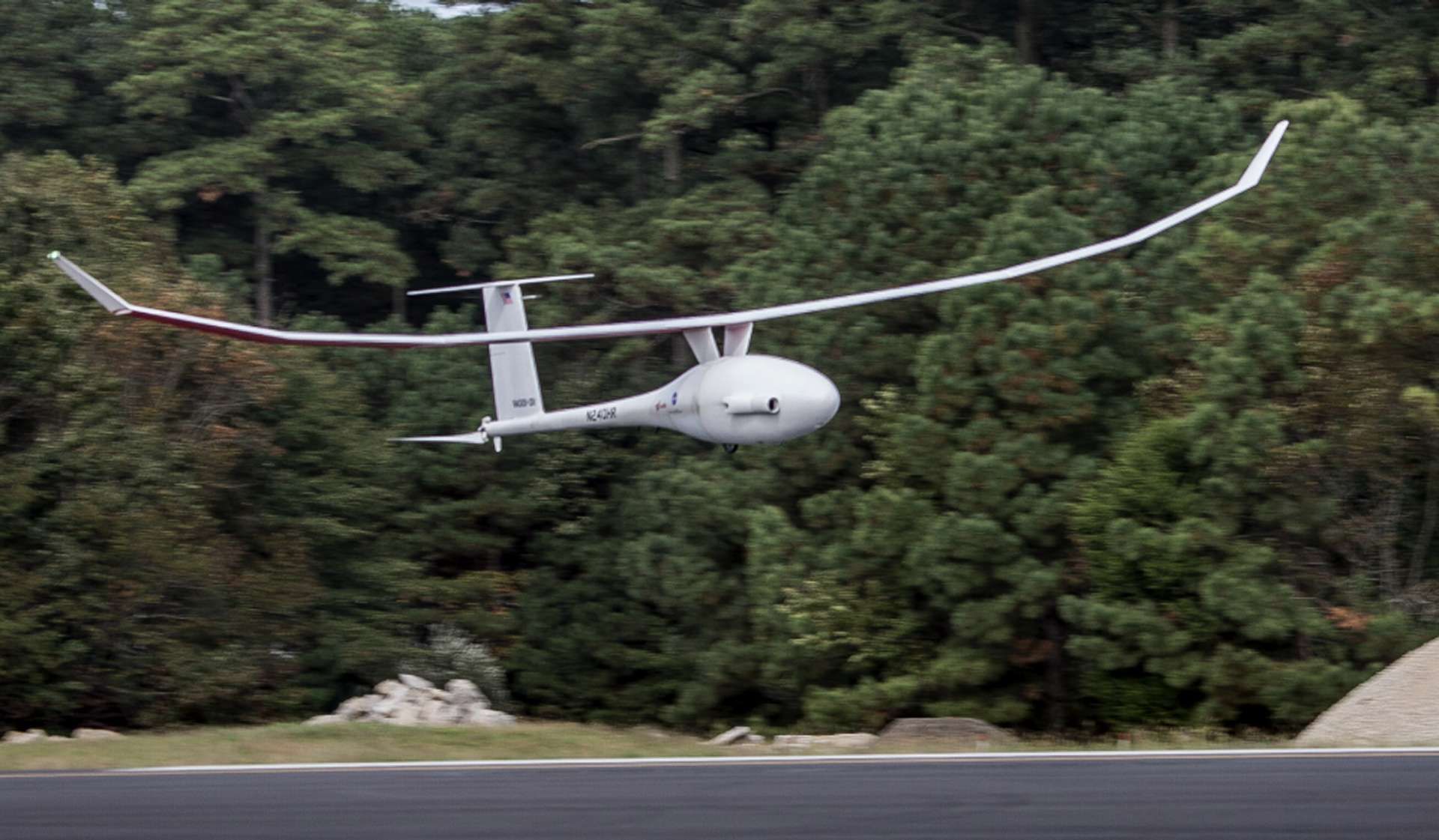
Method Aeronautics’s team, previously involved with Vanilla Aircraft, developed the VA001, a UAV with a 36-foot wingspan and 10-day endurance, holding records for extended unrefueled flights, including a continuous flight of over eight days. (Picture source: Vanilla Unmanned)
Method Aeronautics, established in 2019, focuses on the development, design, and testing of unmanned aerial vehicles (UAVs). The company’s team, previously involved with Vanilla Aircraft, developed the VA001, a UAV with a 36-foot wingspan and 10-day endurance, holding records for extended unrefueled flights, including a continuous flight of over eight days. Method Aeronautics provides services from concept development to flight testing, and its leadership has extensive experience in aerodynamic design, systems engineering, and UAV program management.
The team at Method Aeronautics has significant experience with UAVs and VTOL systems, particularly through their work on the Vanilla Aircraft VA001. This UAV set endurance records for internally powered flights and demonstrated advanced long-duration flight capabilities, showing interesting capabilities for the DARPA initiative. Team members have also worked on other projects such as the GlobalFlyer and Orion UAS, involving aerodynamic designs and extended flight capabilities, providing a foundation to work on a new project for the Ancillary initiative.
Northrop Grumman

Northrop Grumman's ANCILLARY demonstrator is designed to carry a 60-pound sensor payload, sustain up to 20 hours of operational time, and have a mission radius of 100 nautical miles. (Picture source: Northrop Grumman)
Northrop Grumman's previous VTOL projects provided a strong foundation for this DARPA program. The company has previously developed and deployed several autonomous VTOL systems, including the MQ-8 Fire Scout, the Navy’s first large-scale, sea-based VTOL uncrewed aircraft system. Additionally, Northrop Grumman has worked on the high-altitude long endurance (HALE) RQ-4B Global Hawk and the MQ-4C Triton, both of which are used in ISR missions. These projects have provided Northrop Grumman with significant technical expertise to meet the performance goals set by the DARPA for the ANCILLARY initiative.
Northrop Grumman's ANCILLARY demonstrator is designed to carry a 60-pound sensor payload, sustain up to 20 hours of operational time, and have a mission radius of 100 nautical miles. The system is intended for intelligence, surveillance, reconnaissance, and targeting (ISR/T) missions, supporting expeditionary and special operations forces. It will also handles ship-to-shore logistical tasks, transitioning essential parts and supplies efficiently. This aircraft will be capable of launching and recovering in adverse weather conditions without the need for complex infrastructure.
Sikorsky
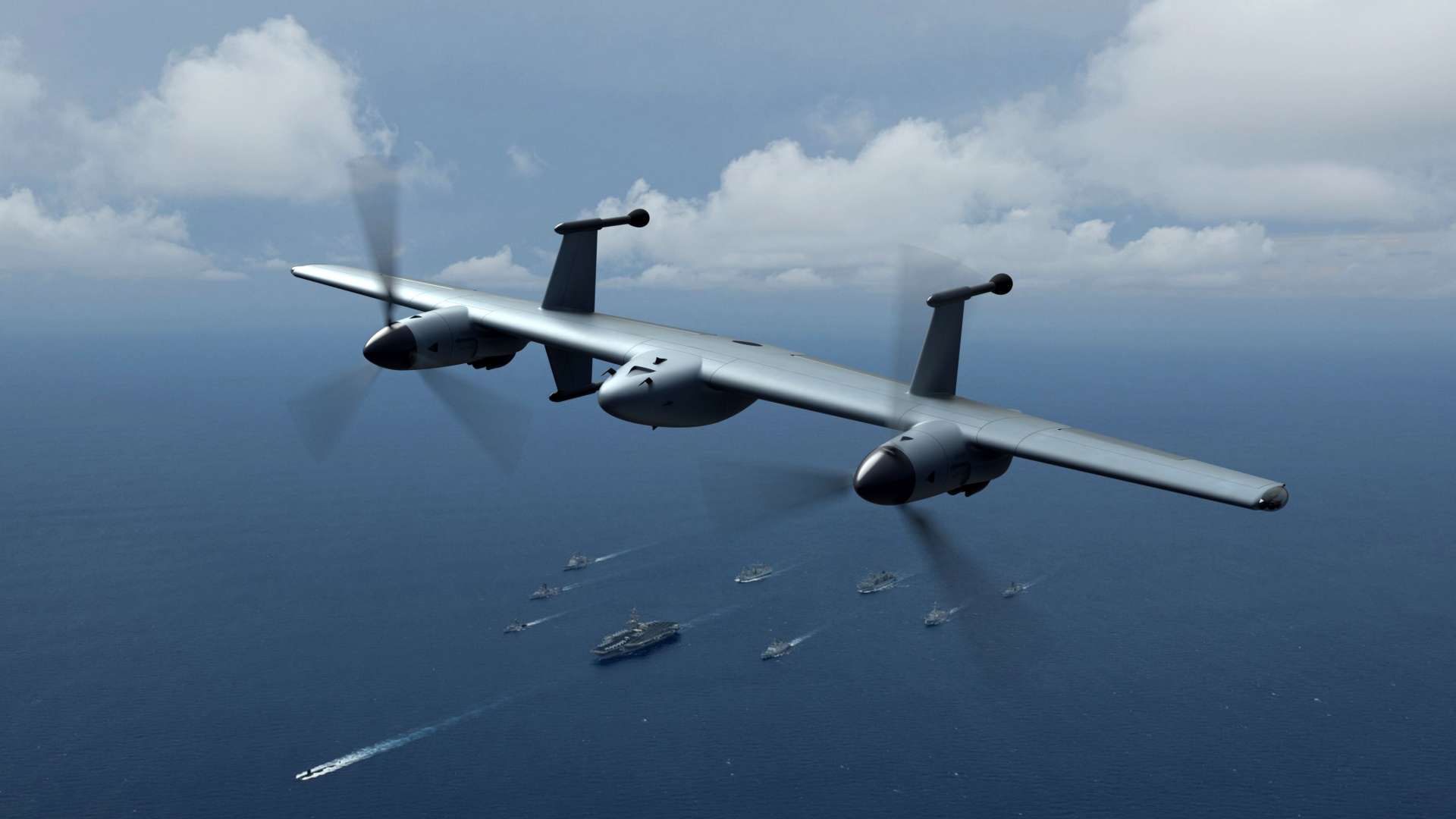
The project from Sikorsky features a "rotor blown wing" design that uses airflow from the proprotor wash across the wing to reduce drag during hover and increase efficiency during forward flight. (Picture source: Sikorsky)
Sikorsky, a subsidiary of Lockheed Martin, has a long history in the development of vertical takeoff and landing (VTOL) aircraft, particularly noted for its contributions to helicopter innovation with the Black Hawk series used by military forces worldwide. The company has been involved in VTOL technology advancements, including the X2 Technology demonstrator, which set records for speed and maneuverability in rotorcraft.
Sikorsky is currently testing a new VTOL/UAS in order to demonstrate its stability in vertical launch/landing and efficiency in horizontal cruise, and meeting DARPA's goals. The project features a "rotor blown wing" design that uses proprotor airflow across the wing to reduce drag during hover and increase efficiency in forward flight, enabling vertical takeoff and a smooth transition to horizontal flight. The current phase tests a battery-powered proof-of-concept vehicle to refine control laws and aerodynamics. If successful, Sikorsky plans to develop a 300-pound hybrid-electric variant with a 60-pound ISR payload. Powered by Sikorsky's Matrix autonomy technology, the VTOL's flight control system and articulated rotor are key for maneuverability and scalability.


No comments:
Post a Comment